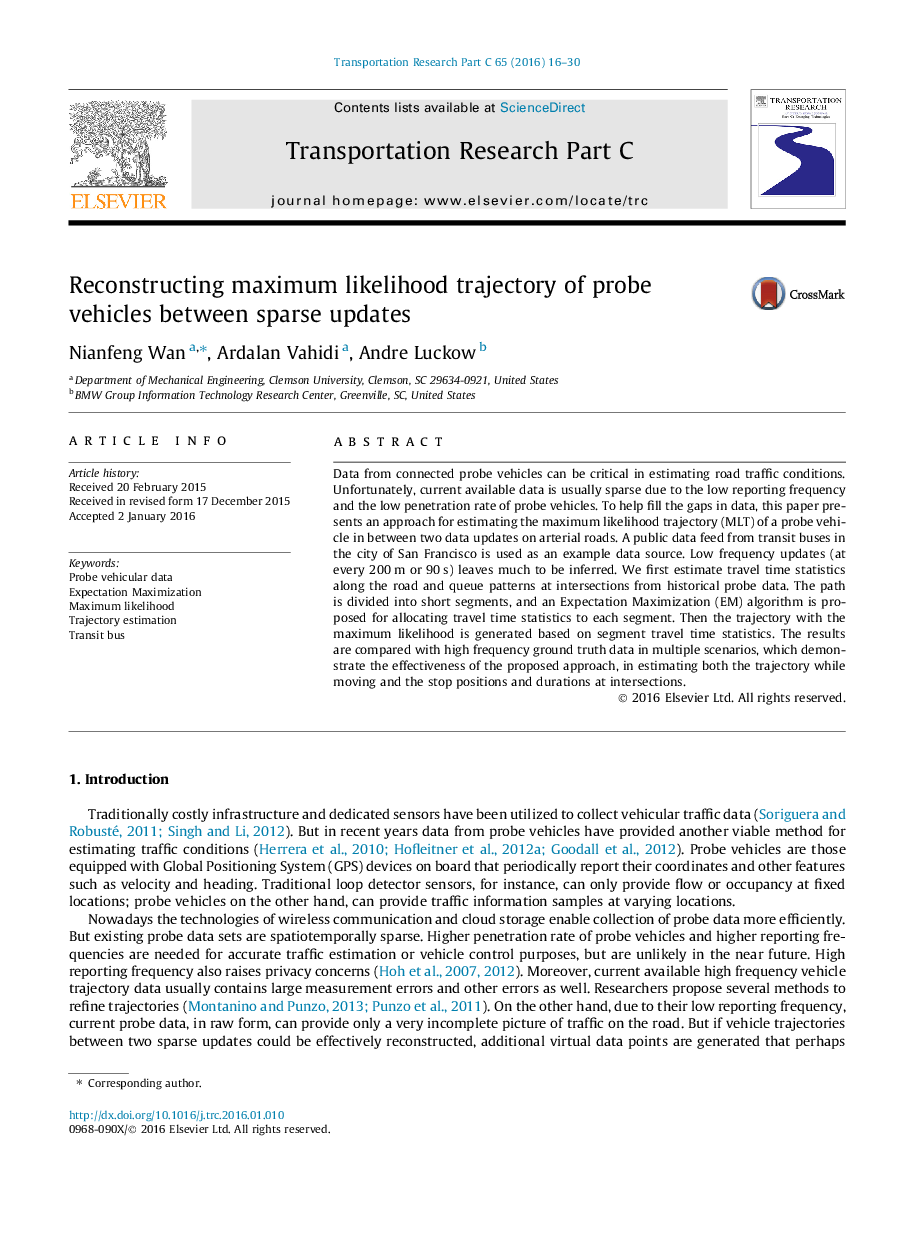| Article ID | Journal | Published Year | Pages | File Type |
|---|---|---|---|---|
| 6936475 | Transportation Research Part C: Emerging Technologies | 2016 | 15 Pages |
Abstract
Data from connected probe vehicles can be critical in estimating road traffic conditions. Unfortunately, current available data is usually sparse due to the low reporting frequency and the low penetration rate of probe vehicles. To help fill the gaps in data, this paper presents an approach for estimating the maximum likelihood trajectory (MLT) of a probe vehicle in between two data updates on arterial roads. A public data feed from transit buses in the city of San Francisco is used as an example data source. Low frequency updates (at every 200Â m or 90Â s) leaves much to be inferred. We first estimate travel time statistics along the road and queue patterns at intersections from historical probe data. The path is divided into short segments, and an Expectation Maximization (EM) algorithm is proposed for allocating travel time statistics to each segment. Then the trajectory with the maximum likelihood is generated based on segment travel time statistics. The results are compared with high frequency ground truth data in multiple scenarios, which demonstrate the effectiveness of the proposed approach, in estimating both the trajectory while moving and the stop positions and durations at intersections.
Related Topics
Physical Sciences and Engineering
Computer Science
Computer Science Applications
Authors
Nianfeng Wan, Ardalan Vahidi, Andre Luckow,
